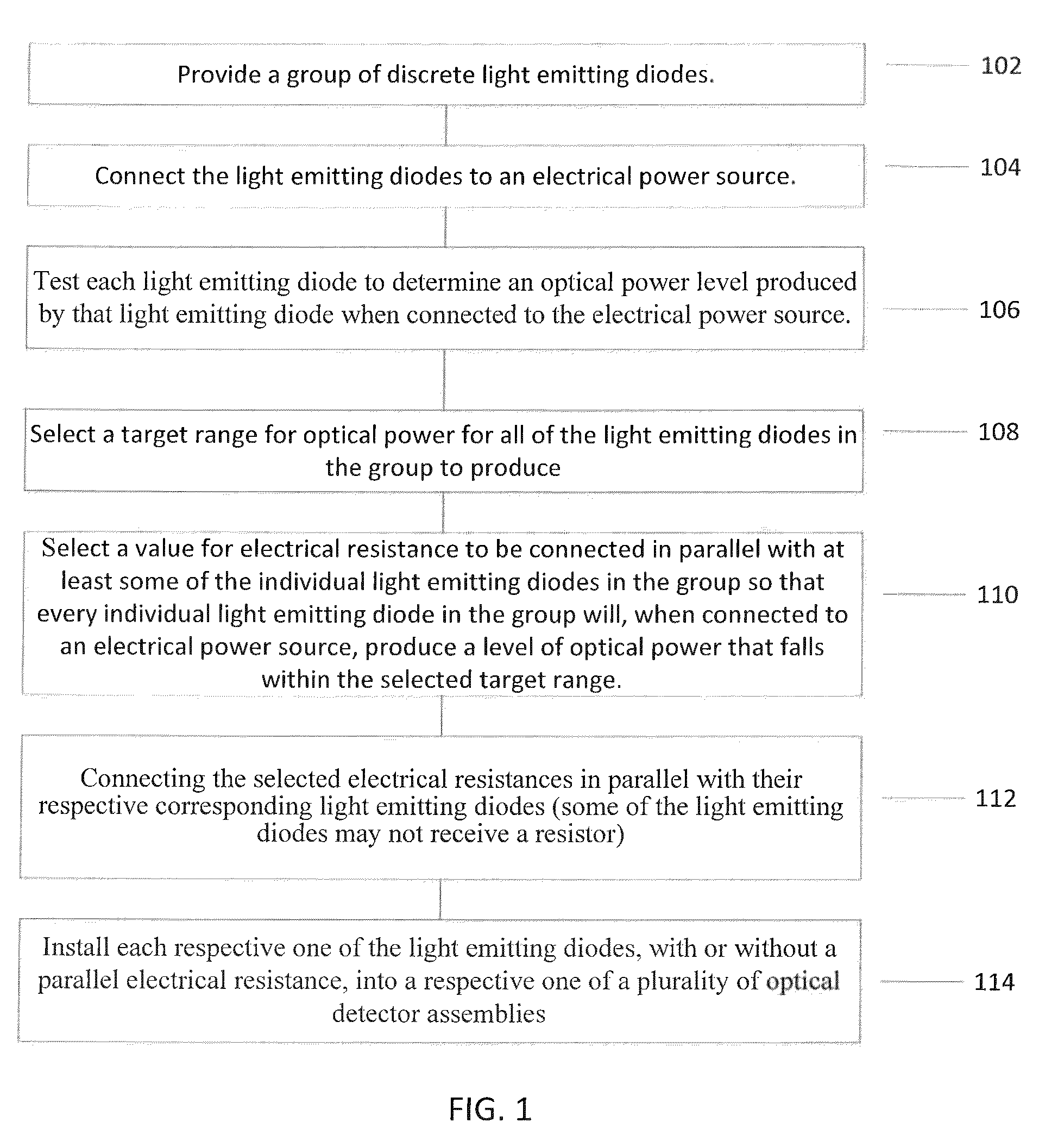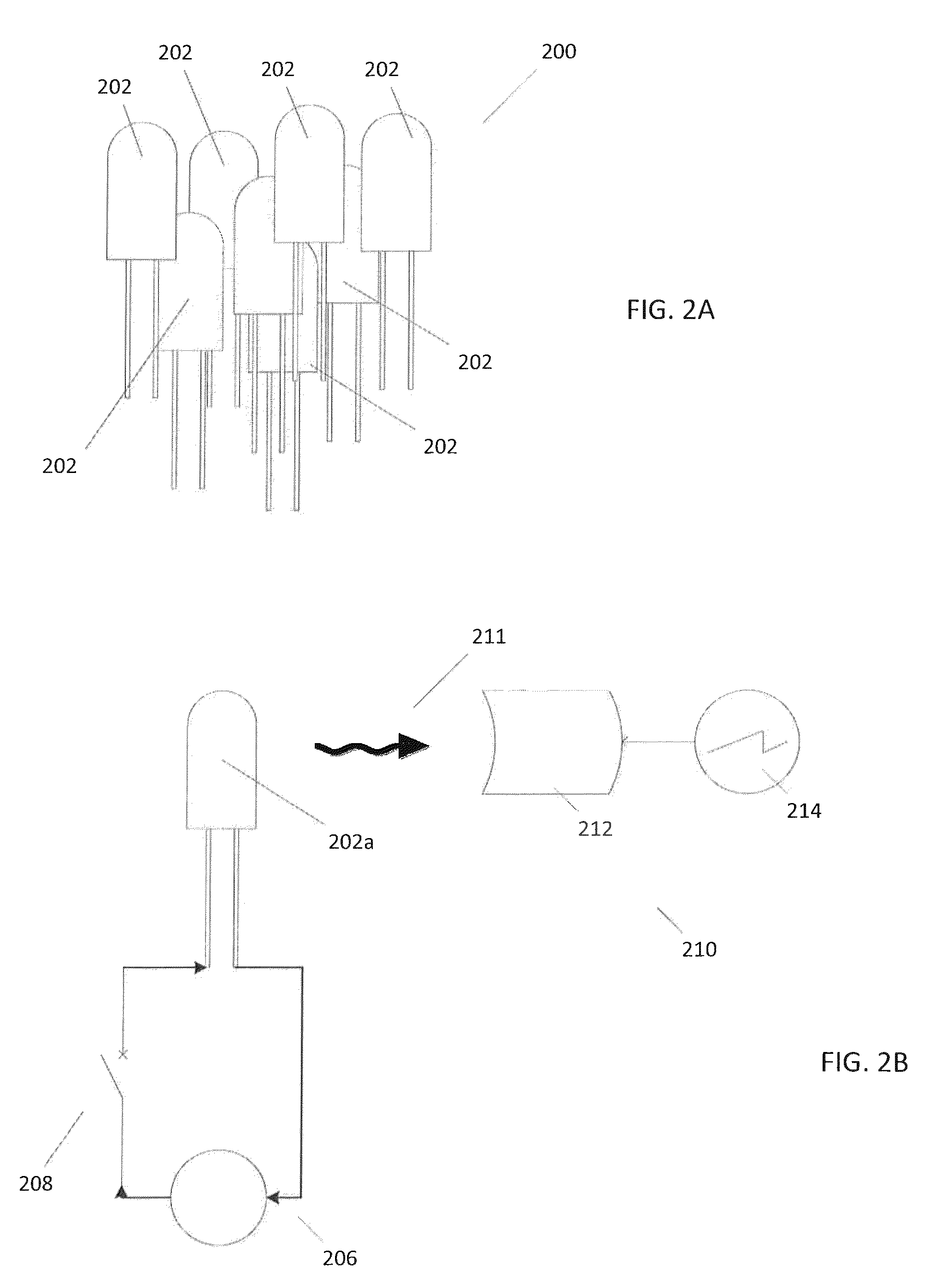Light emitting diode output power control
a technology output power, applied in the field of output power control of light emitting diodes, can solve problems such as the cracking of some parts of the distribution, and achieve the effect of reducing the degree of variation and reducing the amount of optical power
- Summary
- Abstract
- Description
- Claims
- Application Information
AI Technical Summary
Benefits of technology
Problems solved by technology
Method used
Image
Examples
Embodiment Construction
[0018]Commercially available light emitting diodes that are similar or substantially identical in design (e.g., those that are intended to be used in the same or substantially the same end applications) can sometimes produce widely varying optical power levels.
[0019]In some instances, the variation in optical power produced by different light emitting diodes having a particular type of design can be up to 300%. This relatively wide variation can lead to a variety of problems unless measures are taken to address the variation. Some of these measures may include, for example, designing optical detectors and / or related circuitry to be able to accommodate the wide variation in optical power levels, or binning light emitting diodes to categorize them according to the actual optical power each one produces. These approaches are less than ideal. For example, having to design optical detectors and / or related circuitry to accommodate wide variations in optical power from light emitting diode...
PUM
 Login to View More
Login to View More Abstract
Description
Claims
Application Information
 Login to View More
Login to View More - R&D
- Intellectual Property
- Life Sciences
- Materials
- Tech Scout
- Unparalleled Data Quality
- Higher Quality Content
- 60% Fewer Hallucinations
Browse by: Latest US Patents, China's latest patents, Technical Efficacy Thesaurus, Application Domain, Technology Topic, Popular Technical Reports.
© 2025 PatSnap. All rights reserved.Legal|Privacy policy|Modern Slavery Act Transparency Statement|Sitemap|About US| Contact US: help@patsnap.com



